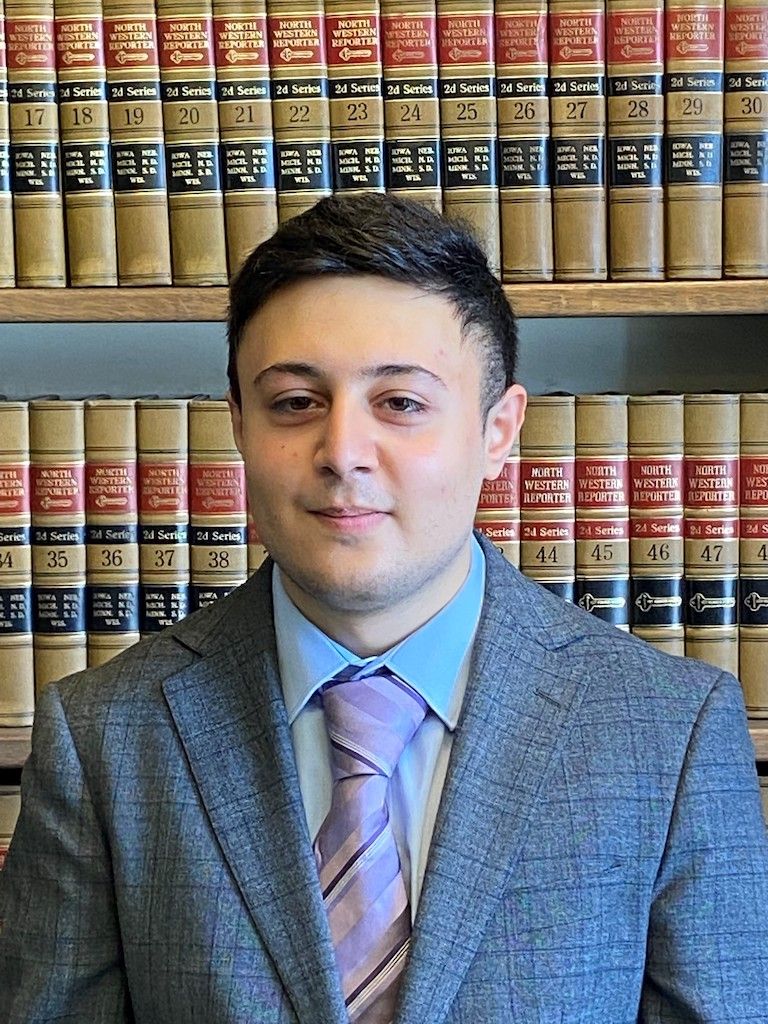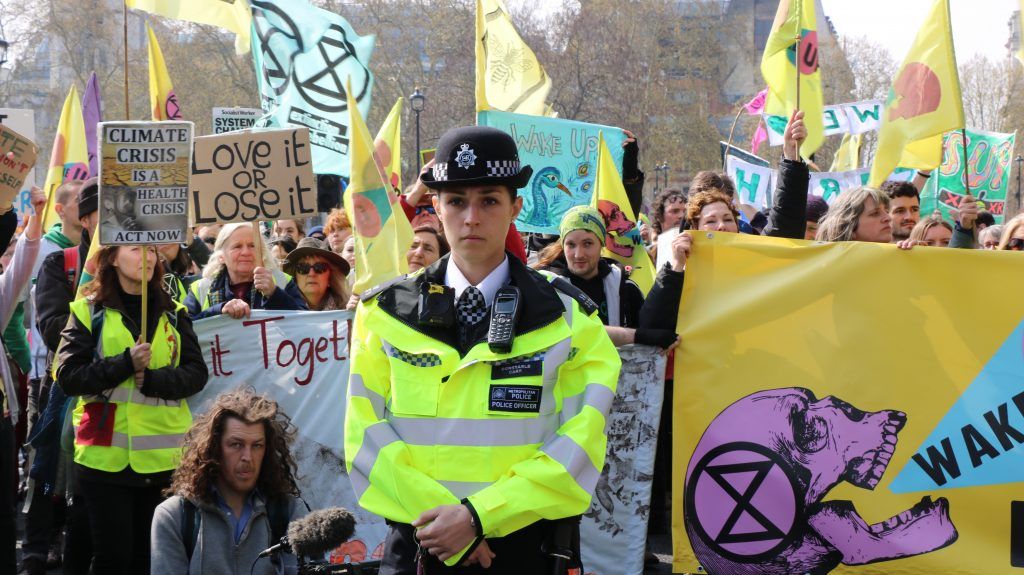Introduction
The Police, Crime, Sentencing and Courts Bill has been the subject of recent parliamentary and public criticism, following the death of Sarah Everard and the subsequent mishandling of the vigil in her name. Particular criticism has arisen from sections 55 and 56 of the bill and their introduction of ‘noise generated’ conditions. Meeting these conditions would allow the police to issue orders to protestors to disband or limit their protests in some way, such as reducing the number of people allowed or prohibiting a mobile protest from entering public areas. For the purposes of this article, I will be examining the general human rights concerns created by noise-based conditions, as the changes for both the public assemblies (stationary protests) and public processions (mobile protests) sections are identical. To that end, we will be examining the key issues raised by the Joint Committee on Human Rights (the Committee) on the compatibility of the provisions with human rights law.
Noise-based Conditions
Before analysing the relationship these noise-based conditions may have with human rights law, it may be helpful to examine the wording of these sections. The bill introduces two new circumstances in which a senior police officer can impose restrictions on public gatherings. The first circumstance is where the noise generated by an event ‘may result in serious disruption to the activities of an organisation’ within the local area. The second circumstance is where such noise may have a ‘relevant impact’ to those in the vicinity. A relevant impact in this case is defined as one that could result in intimidation or harassment, or that may cause an individual to suffer serious unease, alarm or distress.
It is important to note at this point that the wording has garnered some criticism from MPs, such as Baroness Fox of Buckley, who have indicated that the broad wording of the condition could give rise to the restriction of peaceful protests, even if a protest only causes a minor inconvenience to public services. Additionally, the Bar Council has gone further, suggesting that the vagueness of the wording opens up ‘almost every demonstration’ to criminalisation, as the purpose of a protest is to cause significant disruption to achieve legislative action. One general concern about the noise-based provision is that individual practitioners have also come forth to relay their concerns about the effect of this condition within their practice. For example, Bindman, Fraser and Hasan of Garden Court Chambers’ Protest Law Team describe the proposals as dangerous and unnecessary measures that present a ‘clear danger of silencing’ dissent by making it more difficult to lawfully protest. They also raise concerns about process by which vague concepts, like serious disruption of an organisation, will gain their actual definition in law. Their key issue is that the sole power to determine the definition of these concepts rests with one individual, the ‘Home Secretary herself’, rather than being debated and drafted by multiple MPs in Parliament to achieve greater parliamentary scrutiny.
Human Rights Concerns
As the Committee indicates, the noise-based conditions may come into conflict with two human rights enshrined in the Human Rights Act 1998, the right to freedom of expression and the right to peaceful assembly. As shown in Kudrevičius and others v Lithuania,where there is an ‘open expression of protest’, potential violations should be considered considering the requirements and law governing both articles. To this end, the Committee examined all three elements required for a lawful interference, a legitimate aim that is prescribed by law and that meets a pressing social need.
Legitimate Aim
The first requirement for the noise-based condition to be compatible with human rights is for it to be in service of a legitimate aim. The types of aims considered legitimate are listed in article 11 and 10. The Committee, in their examination of the condition, focused on the prevention of crime and disorder aim and the protection of the rights of others aim. In both cases they argue that a legitimate aim is not met. For the prevention of crime and disorder aim, they highlight that we already have laws to prevent criminal instances of intimidation and harassment as listed in the noise-based conditions. They also indicate that the serious unease, alarm, or distress part of the condition would have to fall under the protection of others aim and would ultimately fail, as the public do not have a right to be free from serious unease.
This notion could be supported by the case of DPP v Ziegler and others in which the court highlighted that protests that remain peaceful are protected, even if they may ‘annoy or cause offence’ to those opposed to the protests in the vicinity. In terms of the noise-based provision, it can be argued that claiming serious unease would merely rise to the level of annoyance or offence, meaning it would fail to constitute a competing right that the court could otherwise weigh against the rights associated with protests. However, the case of Abdul v DPP could indicate some prior precent for causing serious unease, through noise, being a potential reason for interfering with the right to protest. Lord Justice Gross in his judgement highlights that when dealing with abusive and insulting speech one should consider the context of the speech as well as its impact. In assessing the impact, the Lord Justice made an effort to separate the vocal aspects from the visual insulting behaviour and noted that the chants on their own created a hostile impression which ‘must have added significantly’[1] to the threat of public order disturbance. In relation to the noise-based provisions, shouting chants which create a hostile environment could be considered somewhat synonymous with the serious unease part of the provision, as both are high levels of noise that threaten public order as they cause some distress or unease to those within the environment.
Prescribed by Law
Another issue the Committee observed was whether the condition was adequately prescribed by law. They explain that the ‘uncertain and subjective nature of the proposed new trigger’ is likely to conflict with its prescription in law, as it puts considerable judgement and discretion in the hands of police officers to responsibly use these powers. The Committee’s main concern with this comes from the decision in Lashmankin and Others v Russia which emphasises that interferences with human rights must not be arbitrary and must have sufficient clarity as to the ‘scope of any such discretion’.
Although, as demonstrated by the case of Lindon, Otchakovsky-Laurens and July v France, the vagueness of a term may not itself constitute a failure to be prescribed by law if it is reasonably foreseeable that an interference may occur. This case highlights that, in some circumstances, laws ‘may still satisfy the requirement of foreseeability even if the person concerned has to take appropriate legal advice to assess’ the extent of restrictions a provision entails. This could be argued to apply to the noise-based provisions because of the protestor’s ability to seek advice from Police Liaison Teams (PLTs), who are tasked with maintaining relationships between protestors and police, as well as explaining where offences may be committed by certain protest actions. As Stott, Scothern, and Gorringe explain, the role of PLTs are to tackle emergent problems, such as instances where a crime may be committed, by explaining and advising an individual that further action may cause them to breach a certain law. However, such an argument is likely to fall short given the concerns by opponents like Sarah Champion and Master Sharmishta Chakrabarti. They point out that vague provisions may have an ‘unfair impact’ on ethnic minorities, given that the discretionary powers granted allow for ‘one law [to apply] for some’ and another for others. This has led to the suspicion that conditions will not be imposed equally on similar protests, as the provision has been argued to be a direct response to the Black Lives Matter (BLM) movement. Further support for this view can be found in recent protest reporting which identified the use of relatively excessive force in BLM protests ‘when compared to similar protests’ during the 2020 lockdown.
Pressing Social Need
One final consideration in examining the noise-based condition’s compatibility with human rights is whether it meets a pressing social need by being ‘necessary in a democratic society’. As demonstrated in Makhmudov v Russia, for an interference to be necessary ‘there must be convincing and compelling reasons’ to impose restrictions to the right. Such an assessment requires the courts to consider the reasons given in light of the whole situation, taking into account whether the state took reasonable direction and acted in good faith when intervening. The Committee claim this interference is unlikely to provide necessary and compelling reasons to interfere with the right to protest because no evidence was found that the law needed the new noise-based conditions. They acknowledge that some may suggest there is a financial reason to limit protests. For example, Extinction Rebellion protests in 2019 cost the police £37,000,000 and protests from High Speed 2 have recently incurred £75,000,000 from police protest management at the taxpayer’s expense. However, the Committee rejects the assertion that the financial cost of managing protests is a necessary or compelling reason to restrict them.
Support for this position could be found in Gorzelik and others v Poland, which states that countries should interpret pressing social needs on the basis of whether they are proportionate to a legitimate aim sought, rather than whether they are just desirable or useful. In its supervisory role, the human rights courts will examine any social need claimed by countries wholistically to determine whether the need was relevant for interference. In terms of the noise-based conditions, the incentive to restrict protests because of their expensive financial costs in police presence may be unlikely to reach beyond a desirable or useful pressing social need.
Conclusion
In conclusion, the Committee’s findings on the noise-based conditions are not only spot on when it comes to incompatibility with human rights law, but also serve to highlight the two core problems with the condition. The first being the lack of appropriate safeguards to alleviate fears of arbitrary and discriminatory use of these conditions by the police, in particular against ethnic minorities and minority-lead causes like BLM as seen with current protest powers. Secondly, the noise-based conditions are too broad and vague to adequately indicate a reasonable interference, especially given that some like the Bar Council have suggested that practically any peaceful protest may be subject to these restrictions. Additionally, this vague approach also creates difficulties in enforcement, as courts will have to spend more time than they otherwise would under clearer provisions determining whether, in cases like DPP v Ziegler and others, a conflict arises between prior human rights case law and the new noise-based conditions. For these reasons, it is my view that the noise-based conditions should be removed from the bill altogether.

Ediz Yetismis is a First Class Honours law student from Aberystwyth University and a proud student member of the Inn. He has spent the last year working with a housing agency (Wales & West Housing Ltd) on several contractual and financial projects, advising on possible legal solutions to practical development problems. In his spare time, he likes to go paintballing.




